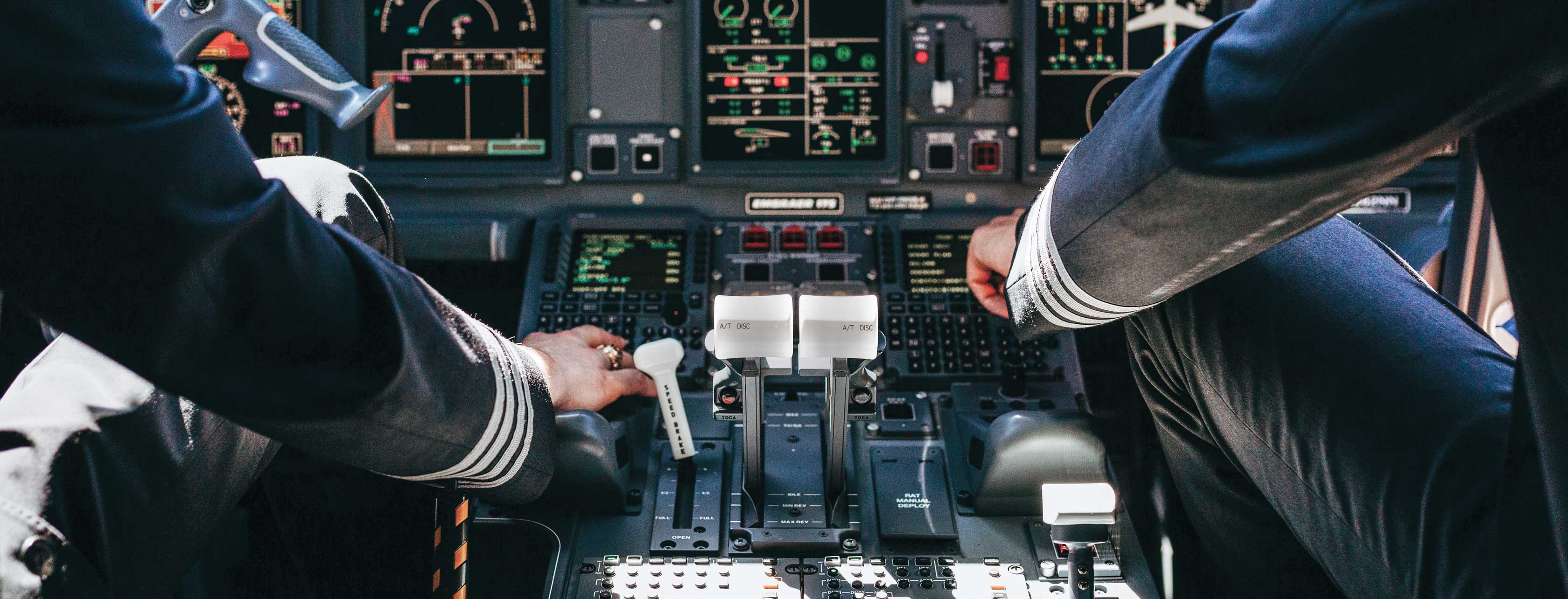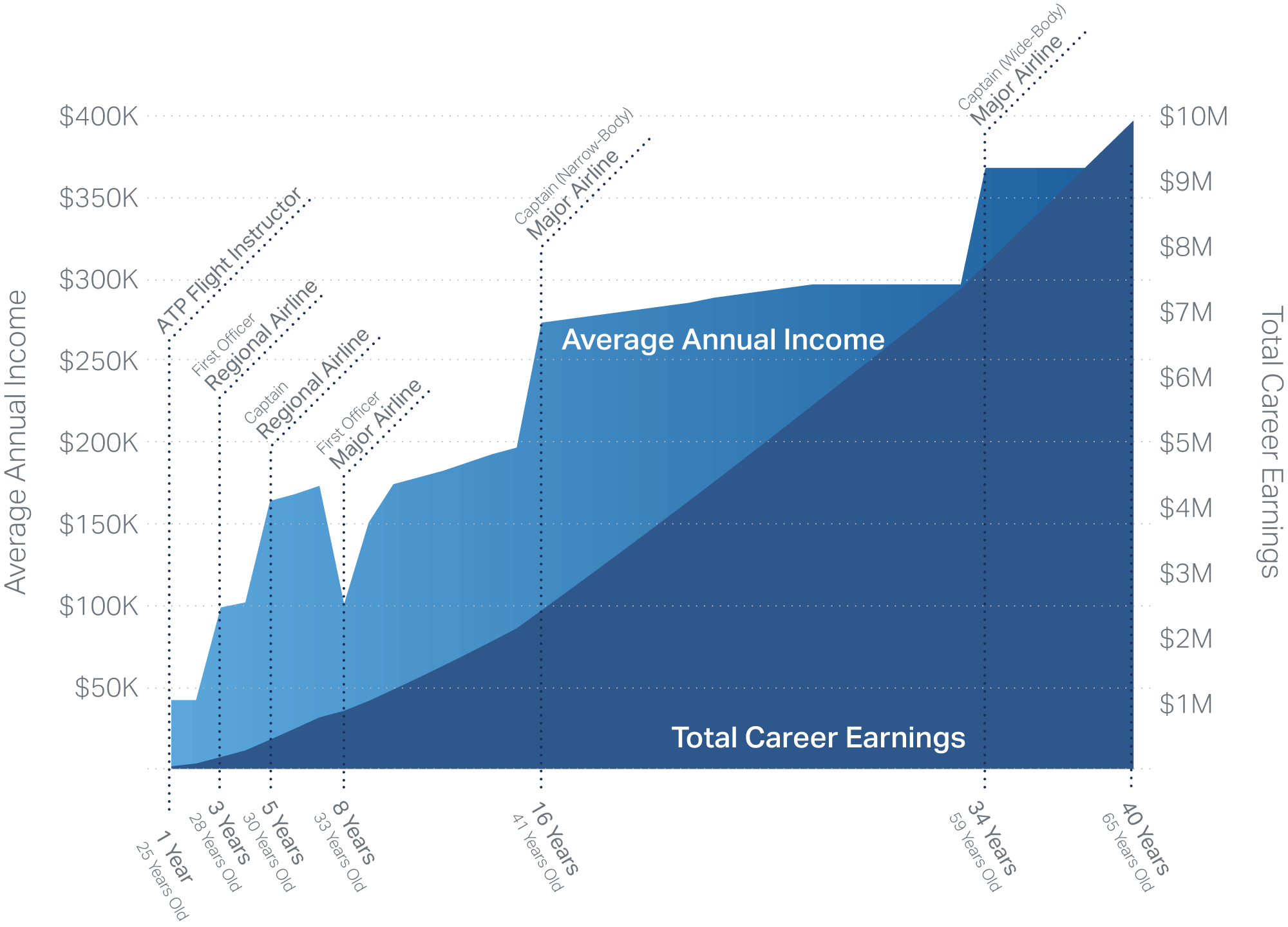Commercial Airline Pilot Salary: How Much Airline Pilots Make in 2025
Flying is a rewarding career, both financially and in terms of job satisfaction, making an airline pilot career highly desirable. There is a wide range of opportunities available in aviation careers, offering various pathways for growth and advancement. Pilots undertake intensive training to develop a highly unique skill set. As a result, commercial pilots are paid well and today, enjoy the benefits of a high-demand career in a growing job market.
Grab a FREE Pilot Career Guide »
Career Planning Tip: To alleviate a spike in demand post-pandemic coupled with a major labor shortage, airlines are now offering dramatic pay increases to pilots in order to retain and attract new talent. Ongoing pilot shortages have led airlines to further increase salaries and offer additional incentives. New pilots entering the industry benefit from these opportunities, making it an excellent time to start building experience and flight hours toward a long-term career in aviation.
Introduction to the Airline Industry
The airline industry stands as one of the most dynamic and essential sectors in the global economy, responsible for connecting people and goods across continents. At the heart of this industry are airline pilots—highly trained professionals who ensure the safety and efficiency of every flight. The complexity of modern aircraft and the responsibility of transporting hundreds of passengers or valuable cargo demand a high level of expertise, which is reflected in the compensation these professionals receive.
Labor statistics consistently show that pilots working for major airlines and operating larger, more advanced aircraft tend to earn higher wages. The aviation industry’s commitment to safety and operational excellence ensures that qualified pilots remain in high demand, making this a rewarding and stable career choice.
Annual Pilot Salary Range
According to the May 2024 Occupational Outlook Handbook, the Bureau of Labor Statistics reports that airline pilot salaries vary significantly, with the salary for commercial pilots being $ per year. The median annual wage for airline pilots, copilots and flight engineers is $. Year-over-year, this was almost a $10,000 increase, as compared to 2023. In addition to annual earnings, pilots take part in company health, life and disability insurance, and retirement plans. In many cases, these plans exceed what employees in other fields receive. Salary data from the Bureau of Labor Statistics also helps illustrate industry trends and regional differences in pilot wages.
| Regional Airline Pilot Pay | $ — $ |
|---|

